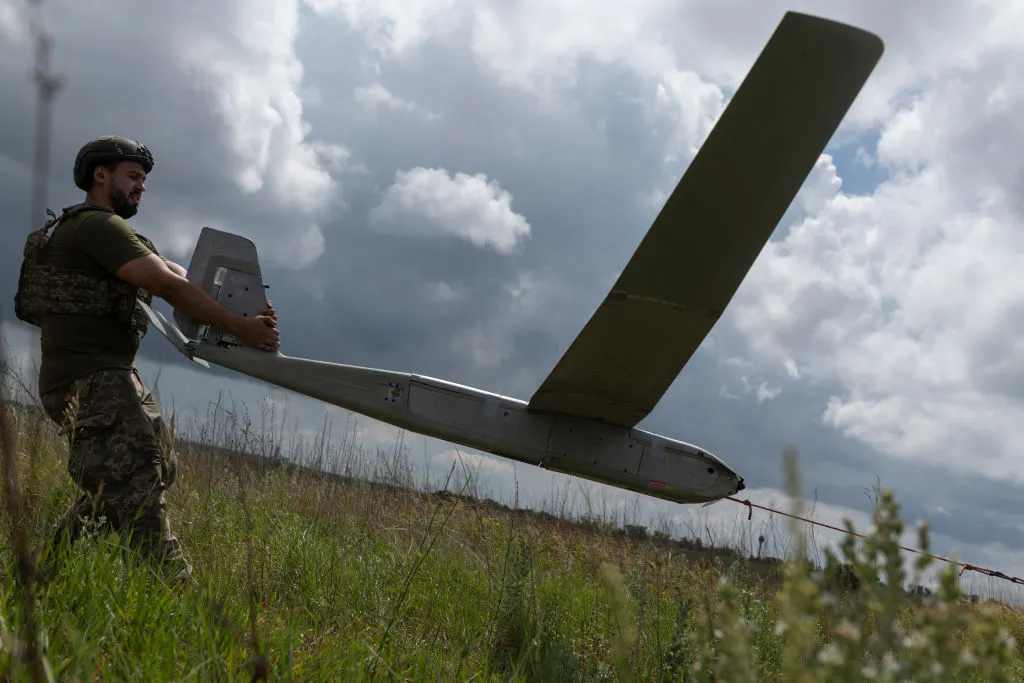
Peter Zeihan: Europe Goes Nuclear
We’ve got two major developments in Eurasia. We’re talking about Ukraine disabling two ships in the Caspian Sea and Poland getting EU approval to build…
Thought Leader: Peter Zeihan

This piece is by WWSG exclusive thought leader, Niall Ferguson.
Imagine it is 2028 and there is a coordinated parallel attack executed by Russia on one of the Baltic states and by China on Taiwan. Under such a scenario, Russia would attempt to seize NATO territory and China would blockade Taiwan as a fait accompli to undermine alliance cohesion.
As things stand, NATO’s conventional forces would struggle to withstand such a Russian assault. And it would take weeks, if not months, to deploy American troops to the Indo-Pacific region.
The Cold War solution to this kind of problem involved the threat of using tactical nuclear weapons. Small tactical nuclear weapons made it highly risky to mass mechanized formations for a large-scale assault, as they would become a perfect target for such nukes. They were crucial to the official NATO plan to defend against a Soviet onslaught through the so-called Fulda Gap in western Germany.
Such an onslaught from the East is once again possible. Russia is now building up two new armies larger than the armies of half of NATO combined. Soon, armchair strategists will have to learn about the Suwalki Gap—the area around the Lithuanian-Polish border, which would be the shortest route from Belarus to the Russian exclave of Kaliningrad.
Meanwhile, China is building roll-on, roll-off ferries that are nominally civilian, but have started to take part in military exercises. They are part of a sustained effort to amass the naval assets necessary for a prolonged blockade of Taiwan—and if necessary a war at sea.
But would whoever is U.S. President in 2028 be willing to meet such challenges with tactical nuclear weapons and all the associated risks of escalation to World War III? Have we no better deterrent than the old threat of Armageddon?
The good news is that we do now.
In contrast to nearly all predictions, when Russia’s offensive was launched in February 2022, Ukraine not only thwarted the initial assault, but drove back and then held what was once considered the number two army in the world. It has stemmed the Russian tide not only through the heroism of its own troops but also by employing drones in the hundreds of thousands.
Ukraine is the first nation to have created a new military branch, the Unmanned Systems Forces of Ukraine. This is a pivotal moment akin to the creation of the world’s first air force, the Royal Air Force, formed on April 1, 1918, seven months before Britain’s victory in World War I. Ukraine’s use of drones is transforming warfare as fundamentally as airplanes once did.
NATO forces have, in comparison, small drone arsenals in the hundreds or low thousands. But that is changing. Earlier this summer, U.S. Indo-pacific Command revealed its ”hellscape” strategy to fill the waters around Taiwan with tens of thousands of unmanned boats, submarines and drones in the event of a Chinese move against the island.
The Replicator Initiative, announced by Deputy Secretary of Defense Kathleen Hicks a year ago, is intended to provide the manufacturing base that will enable hellscape. Six NATO countries recently announced their own version of hellscape to deter Russia: the European drone wall.
Unlike large standing armies, drones that are being held in reserve do not take up a lot of space, do not need to be fed, and are not drawing salaries. Unlike tactical nukes, drones do not produce fallout. But they can provide a comparable level of tactical deterrence.
An arsenal of millions of autonomous drones is a credible threat to a mechanized assault or a flotilla of ships. A state-of-the-art drone swarm could halt a Russian invasion or a Chinese blockade. Ukraine has proven this by blunting large-scale Russian mechanized attacks and crippling Russia’s Black Sea fleet. Kyiv’s expert use of drones is the reason it has been able to launch a surprise offensive deep into the Russian region of Kursk.
The implications for legacy military hardware are profound. Interestingly, the debate on tanks versus drones today echoes the one on battleships versus airplanes a century ago. Today’s drones are the equivalent of the barn-built biplanes of World War I, which barely resemble their modern jet-powered counterparts. Far more formidable unmanned munitions are coming. We are already seeing so-called “deep-strike” drones: Iranian Shahed drones used by Russia and the long-range drones built by Ukrainian startups. En masse, such drones can overwhelm even advanced air defenses. It remains to be seen if Iran and its proxies have enough such weapons to overwhelm Israel’s defenses in the coming days. If not, their recent threats will prove empty.
A similar revolution is underway in naval warfare. As Elliot Ackerman and James Stavridis have argued, and as Ukraine has shown in the Black Sea, deep-strike drones can also be used against naval targets. Like tanks, large surface ships, including aircraft carriers, are at risk of obsolescence.
This year, for the first time in history, Ukraine and Russia are building drones on an industrial scale. The evolution is from one operator directing a single drone to one operator directing whole flocks. By the end of 2024, we shall see for the first time what we call autonomous mass—swarms of drones in the thousands being directed by a handful of operators, relying less and less on ground control.
The shift to unmanned warfare is unstoppable. That is the lesson we have learned from Ukraine. For the United States, however, the Replicator Initiative and hellscape plan are just a start. What we need now is to build the Unmanned Systems of America.
The alternative could be a catastrophic failure of deterrence on the watch of the next President.
Peter Zeihan: Europe Goes Nuclear
We’ve got two major developments in Eurasia. We’re talking about Ukraine disabling two ships in the Caspian Sea and Poland getting EU approval to build…
Thought Leader: Peter Zeihan
Dr. Sanjay Gupta’s Top Health Stories of 2025
From the resurgence of measles to a new way to treat pain, 2025 was a challenge for public health while still offering moments of hope. Sanjay…
Thought Leader: Sanjay Gupta
Ian Bremmer: The state of global conflict in 2025
On GZERO World, Ian Bremmer takes a hard look at the biggest global crises and conflicts that defined our world in 2025 with CNN’s Clarissa…
Thought Leader: Ian Bremmer

